Interview with Gabriella Loeb
Florida born, Colorado raised Gabriella Loeb is a New York-based sculptor with a background in fashion from FIT in New York and textiles from Konstfack; Stockholm University of Arts, Craft, and Design. Wilma Tesch met her in her Brooklyn apartment to talk about inspiration, silk satins and smocking among other things.
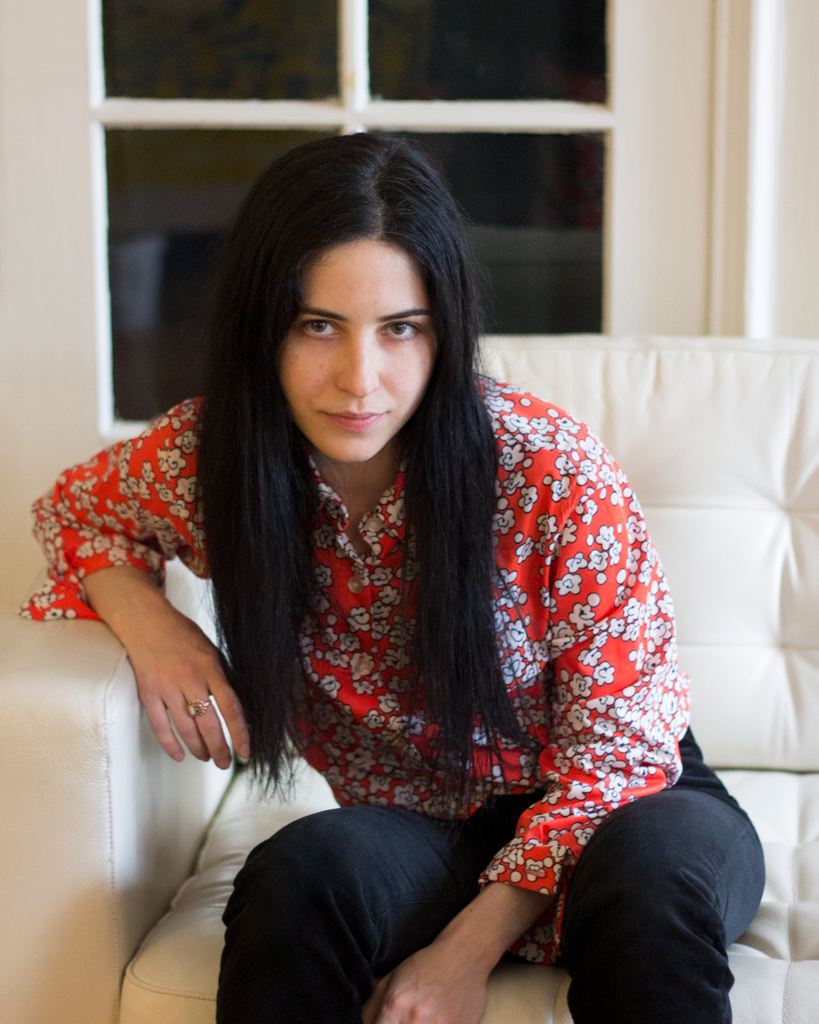
Wilma: What is the biggest driving force in your work?
Gabriella: To take a thought or a glimpse of a vision and make it real. To reinvent myself and the work in the process, and if I’m lucky to exceed my expectations and surprise myself.
What is your biggest source of inspiration?
Lately, I’ve been inspired by things that are overgrown. This summer there were these sunflowers growing on the sidewalk that were 8 feet tall towering over the parked cars on the street. They felt as if they could devour the car. That’s a feeling I’m after in my own work - that indiscriminate appetite that wants to multiply and devour. The point as to where whatever existed before can no longer be recognized.
When did you start to develop the techniques you use now and why are they interesting to you?
I developed a lot of my techniques early on when I was making clothing for myself and then later refined them at FIT and working in the fashion industry. At first, it wasn’t a conscious choice to use what I learned from fashion. I was actually trying to distance myself but, in the end, it stuck with me. The way I work with sculpture is similar to how I make clothing, it's a very methodical process. My folded textile sculptures were inspired by the smocked dresses I wore as a child. I was always fascinated by them because I could never quite figure out how they were made. Later on, I realized I could use this technique of folding to build structure. I sewed thousands of folds with the use of the grid. The grid is what I use to create movement. I use it many of my sculptures. In the work Sun Queen it creates form by structuring each individual spike.
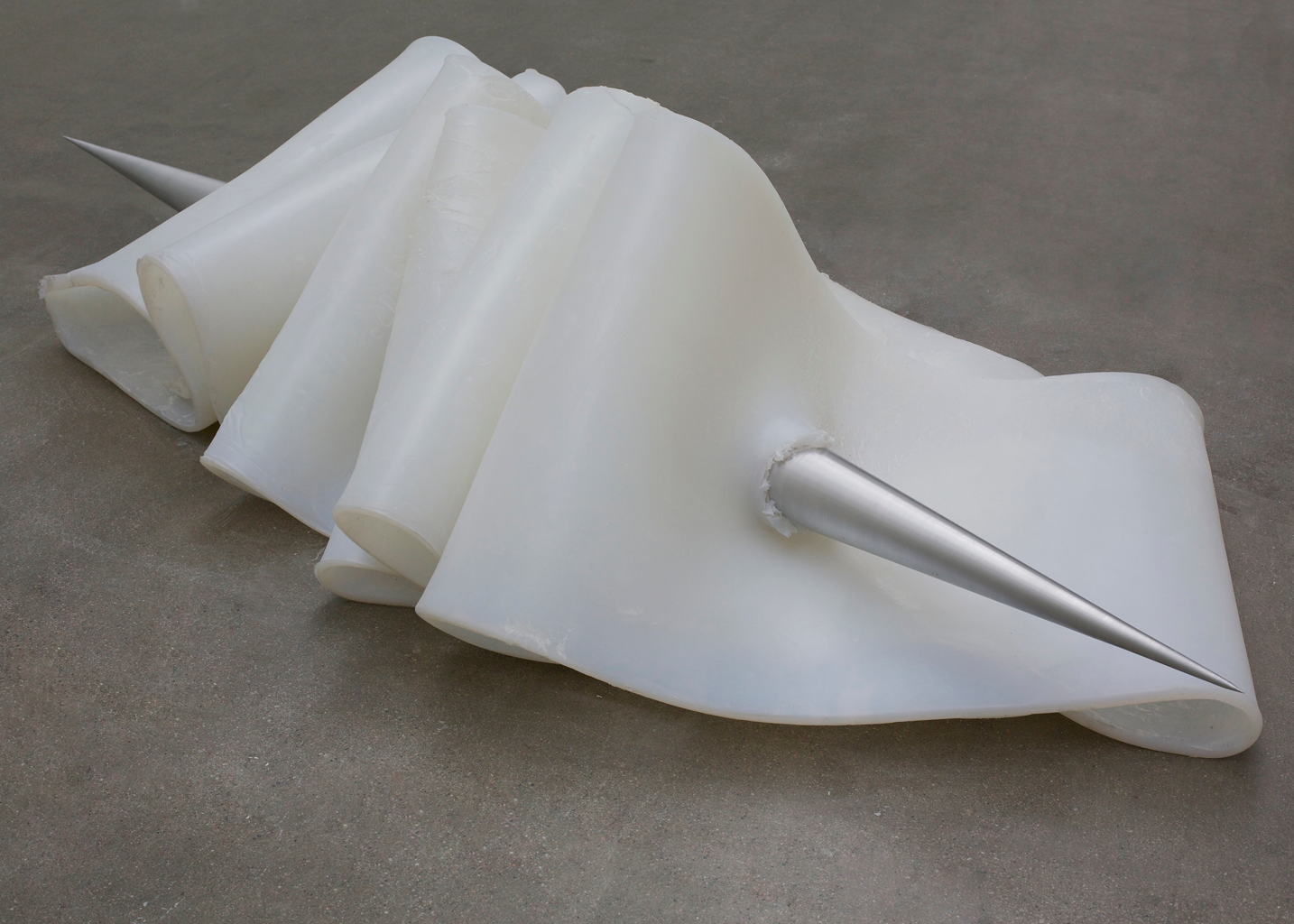
Is movement a big part of your work?
Yes, it’s a repeating theme. It comes from my desire to make a work that is dynamic. That utilizes light, dark, movement, and texture. But also a certain amount of friction and release. My experience as a dancer has definitely shaped my approach to sculpture. It has given me an understanding of all the components that build a simple posture and how to command space through the body.
What materials do you like using and what drives your choices of them?
I choose materials with ecstatic qualities, defiant metals, and decadent silk satins. Lately, I’ve really been into polyester resin and silk satin. I’m attracted to how they refract light. They both share an incandescent quality, especially in the way the medium absorbs color, it reminds me of Technicolor film.
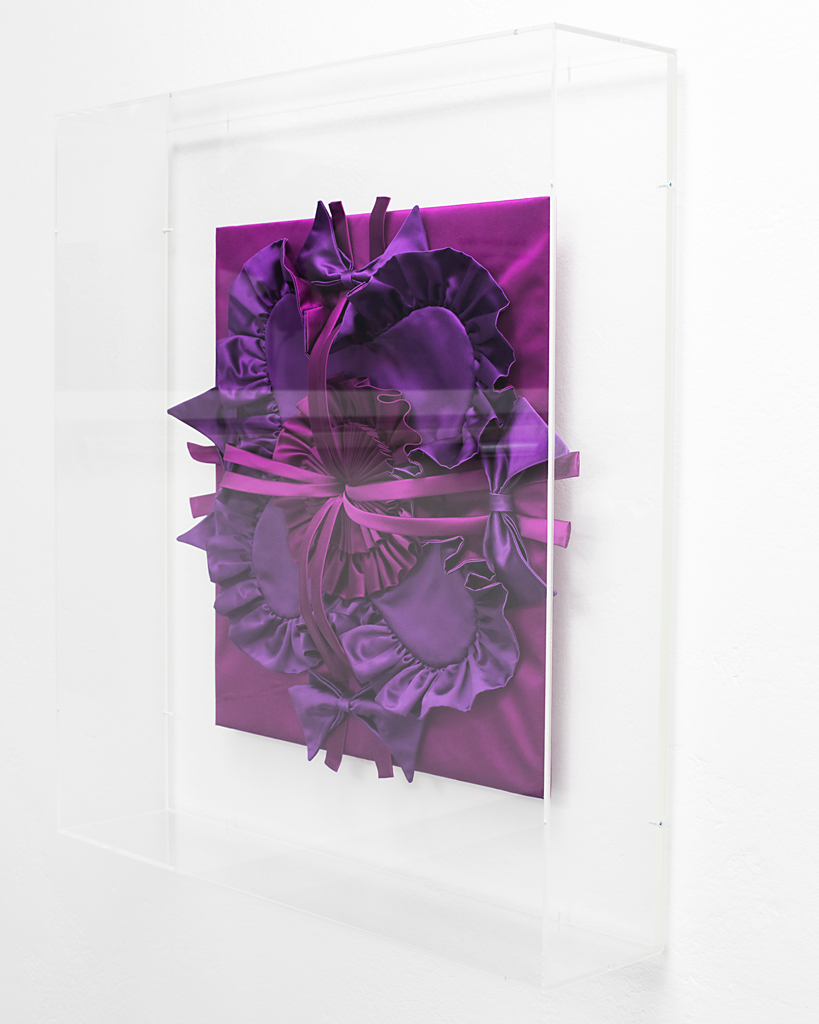
You lived in my hometown Stockholm for almost a decade, what are the biggest differences between Stockholm and New York (apart from the obvious such as range, size, etc) in terms of working as an artist?
Well, I’ve only been here a year but, I would say there is much more access to different types of material. If you can dream of it it's just a phone call away. It's nice to have options to get exactly what it is you want.
I read in one of your old interviews that one of the reasons you did IMITATION OF ONE and ONE WHO ONCE WAS was because you were bored with the fashion body – can you explain that?
I got to the point with fashion where I no longer wanted to work within its rigid structure. I wanted to work intuitively, experimenting more with material and developing my own techniques and processes. I became less interested in the fashion body and more interested in building body in the material itself.
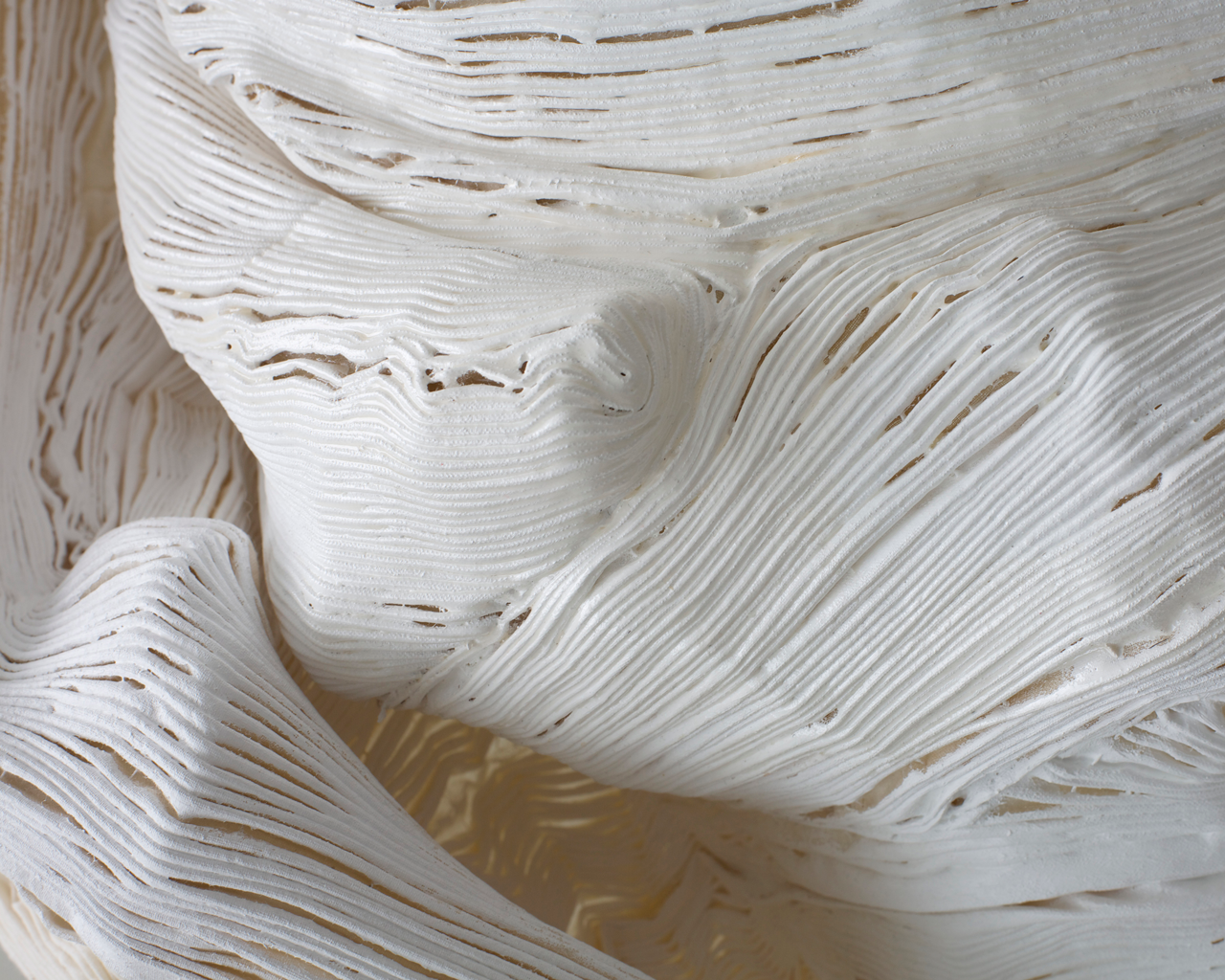
I find that your sculptures have a lot of restrained anger. Your older ones with a bit less polished finish like SUN QUEEN, ONE WHO ONCE WAS and SOWN IN DISHONOR RAISED IN GLORY has a more obvious expression to them but your newer ones, the pieces in silk in the plexiglass are so neat with perfect finish yet it still has a lot of anger to them. I also feel a lot of anger in the combination of silicone, muslin, and metal. What do you think about that? Is that something you´ve done on purpose?
I think that's an interesting reading considering the way I handle the silk with such care and love. In a way, I’m almost a little intimidated of the material because it's so precious. I spend so many hours meticulously sewing, delicately shaping, fluffing them up. It's probably why I want to protect them from greedy little fingers who assume textile is theirs to touch. My decision to use plexiglass was probably the most aggressive choice I could have made. Isolating a material that is made with the warmth of the hand. The colors I chose are also pretty vulgar but, are also a bit of a guilty pleasure and a secret love. The same goes for the bows. I like the fact that I can use what´s typically seen as cute and give it claws. The choice to use metal and silicone was aggressive but, also sexual. I realized in my folded textile works that I wasn’t just folding material but piercing it over and over again. I wanted to magnify that idea by maximizing the fleshiness of silicone against the coldness of steel. At the time I was reading a lot about baroque sculpture, in particular, St. Teresa de Avila's written account of her ecstatic experience with god.
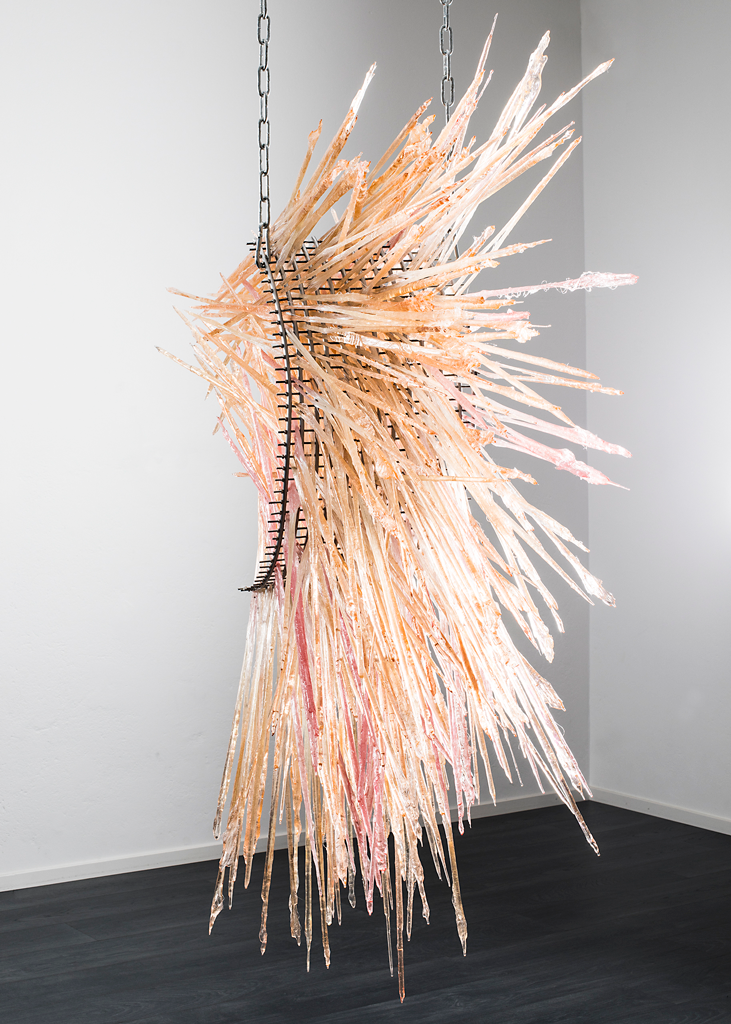
Your silk pieces also make me think about a very well dressed, controlled and proud woman and I see a very strong connection to fashion; what is your inspiration for them?
Every time I came across an image of silk on my phone I saved it. There is something so divine about silk, it would have to be one of the most photogenic materials. Especially when its folded, and twisted, manipulated into bows and shirred into ruffles. I looked at a lot of women’s 18th-century rococo clothing, early 19th-century fashion and what John Galliano did for Dior in the early 2000s. I love the way these ornamentations enhance the body and give it power.
What projects are you working on now and where are you heading with them?
I will continue working with my satin reliefs, refining my process and blowing up the proportions. I want to make them even more intricate and difficult for myself. A while back a friend gave me a collection of Russian imperial textile fragments from the winter palace in St. Petersburg. I will use these as a starting point for new work. I’m interested in the origins of the patterns and the meaning behind the religious iconography. The patterns themselves are pretty impressive, they weave in an out of themselves with no beginning or end.
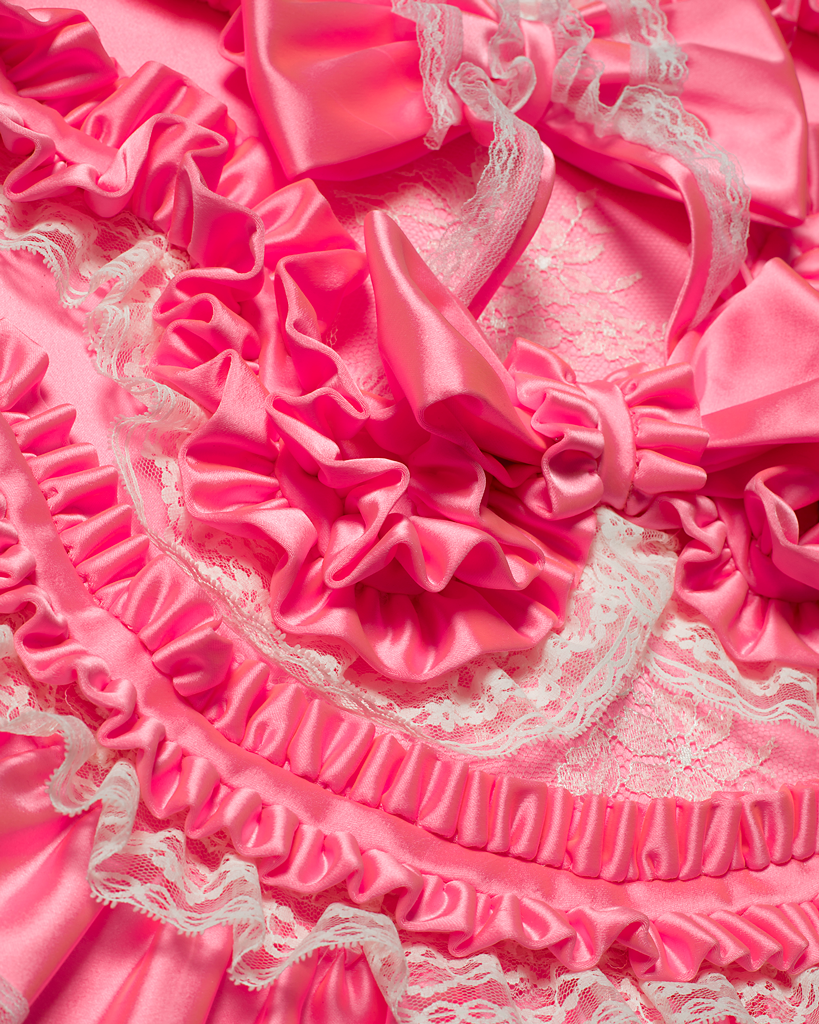
The way Loeb talks about her work makes me eager to work myself. She has such a strong point of view and a well thought out process that yet has a lot of playfulness to it. Her work is fascinating in many aspects and the way her work has developed over the years is remarkable. In a time of fast industries, she really takes her time to do precise work that never fails to amaze you.